Part 2- Courtship
John W. Garbutt- Class of 2019
“Strangers in the night exchanging glances
Wondering in the night what were the chances
We’d be sharing love before the night was through”
Frank Sinatra- Strangers in the Night
As April entered its first week, the moon was destined to intercept our line of sight to the sun, as were the Night-Herons for each other. April is possibly my favorite month in this location because of the sensations of spring, the smells and sounds. Barn Swallows may be the avian harbinger of spring, but for the woods, the first faint smell of Japanese honeysuckle coupled with the song of the first arriving White-eyed Vireos, are the opening act of spring’s woodland experience. The honeysuckle reaches its short-lived peak the latter half of the month, then by early May, it is gone quickly into memory and longed for again like a lost love.
Over the first two weeks of the month, most of the days were gray, damp, and with a sweet aroma. With this as a backdrop, I observed the herons court and construct their nests. Most had settled into the incubation period by mid-month. The one nest that seemed to not be in use was the nest nearest the Cooper’s Hawk. It can be difficult to see even a large bird like a Night-Heron on the nest when they are incubating. The thickening canopy did not help. The herons will lay 2-6 eggs and incubate them for 24-25 days. Once hatched, the young nest anywhere from 30-43 days.
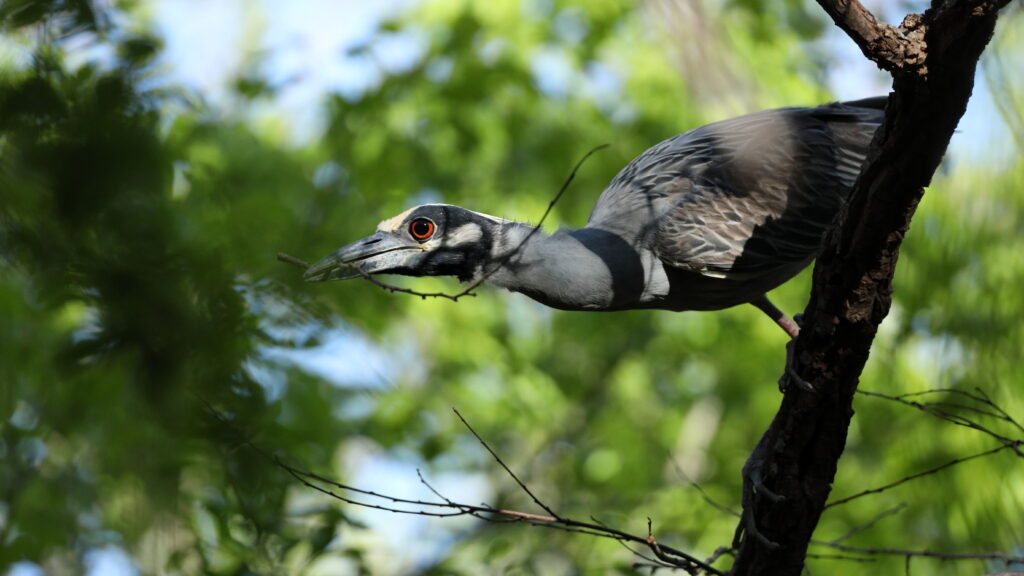
Night-Heron gathering materials for the nest on 4-4-24.
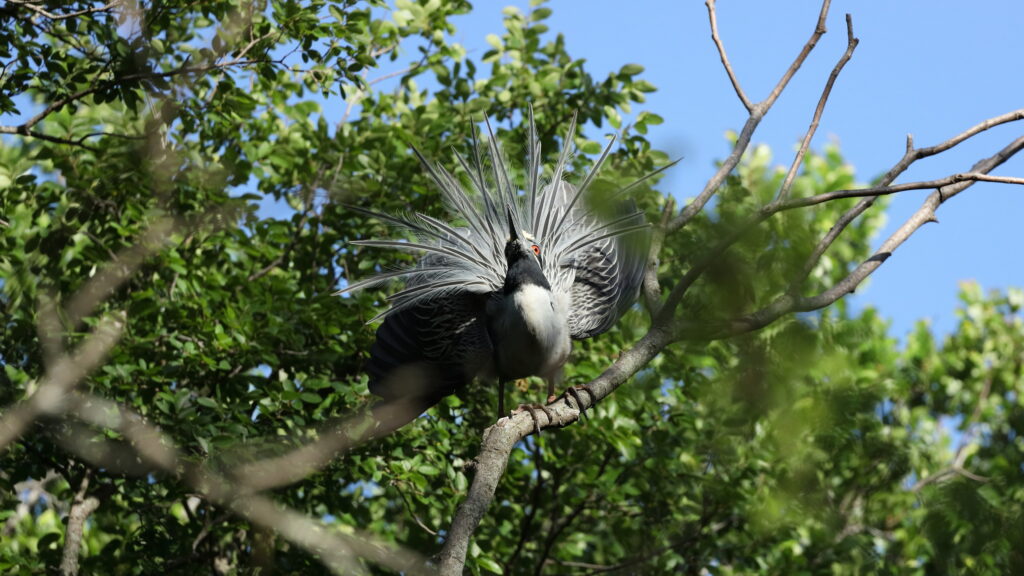
A rare sunny day on 4/7/24 when this heron flew in and began displaying.
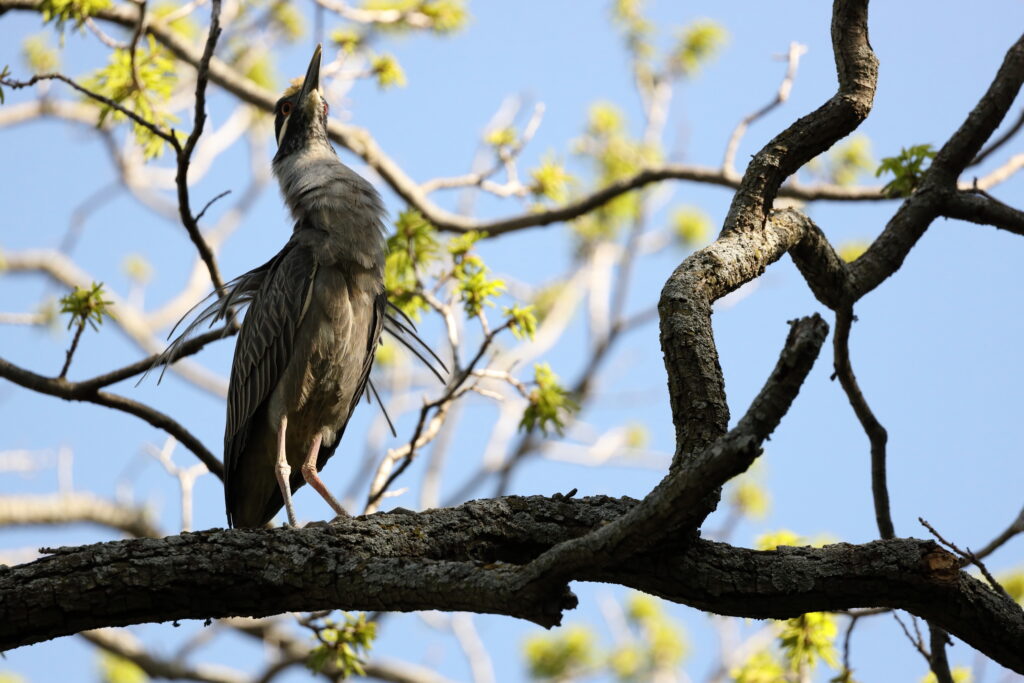
The courting heron raised his neck vertically and began to fan his shoulder plumes.
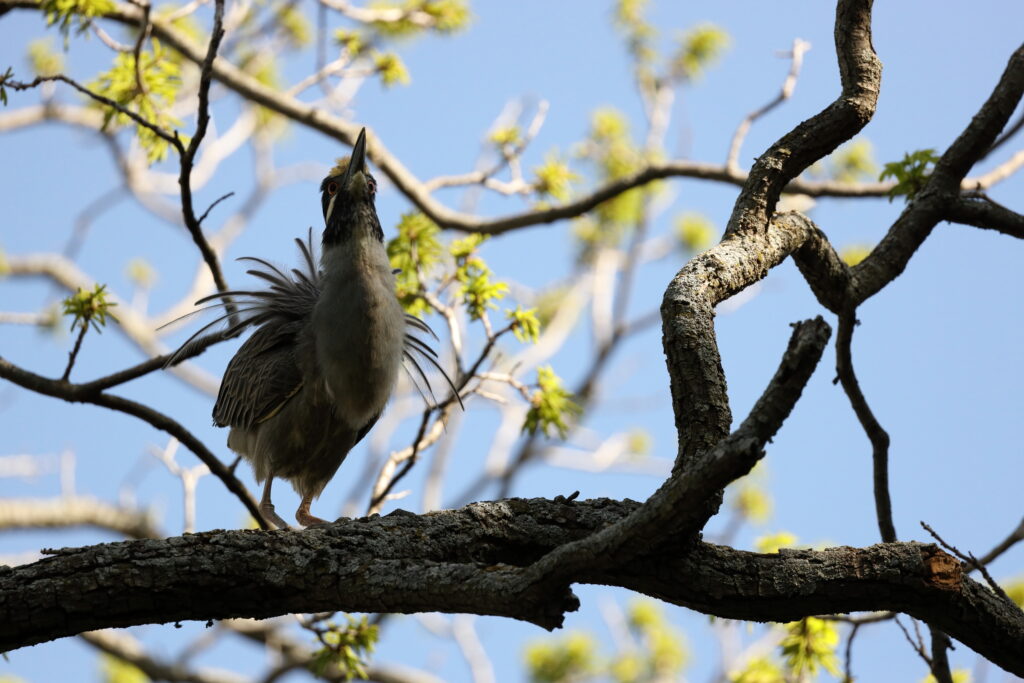
He then descended into a bow as the plumes fanned out further.
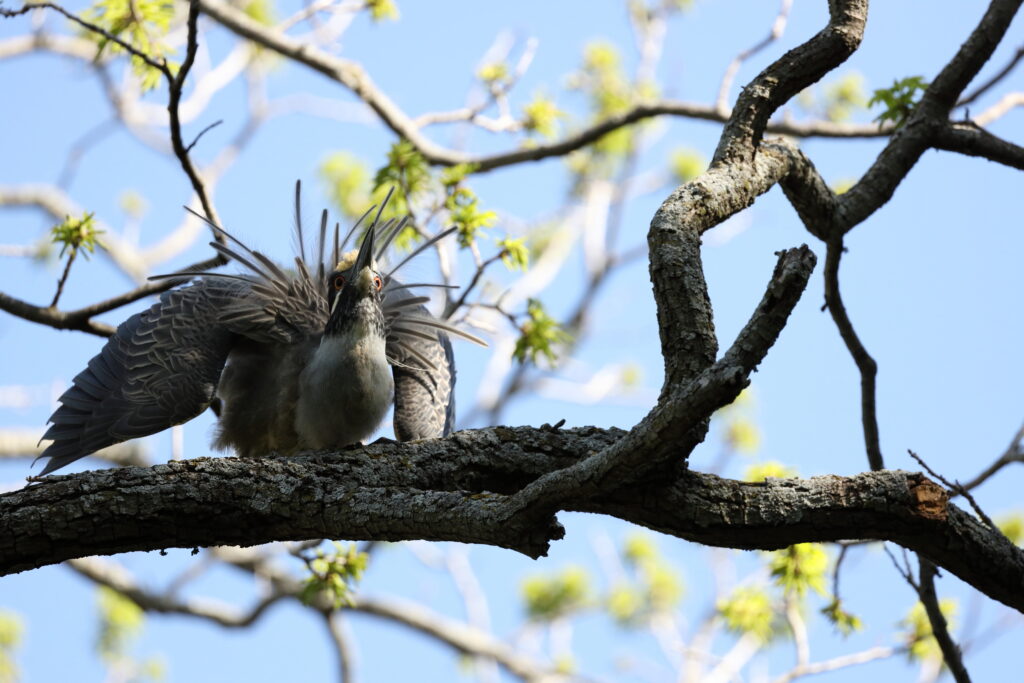
At the bottom of his bow, he spread his wings with the shoulder plumes displayed, and emitted a soft coo toward his potential mate.
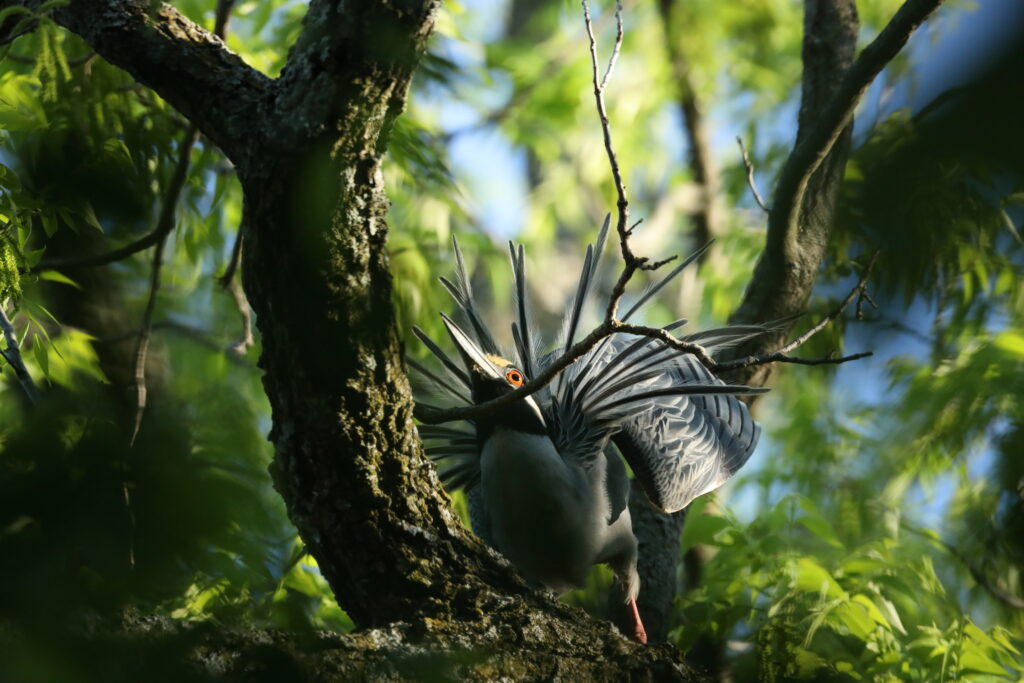
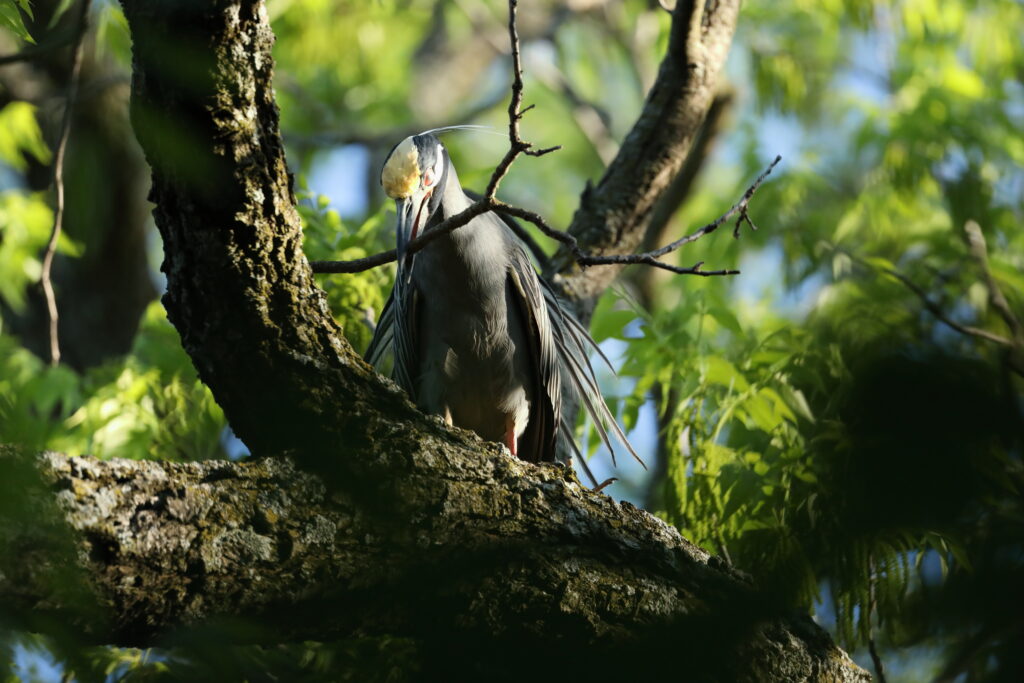
After performing its courtship ritual, he then selected this branch for his mate to take to a potential nest location.
On the 15th, I heard my favorite spring sound with my first northbound Swainson’s Thrush. After surveying the nests, I felt certain the colony was set with six pair, possibly a 7th. This all changed the following week. Starting my =next visit at the main 2023 location, I noticed an uptick in activity with flighty herons. There was also more vocalization. Following one particular call, I located a heron in immature plumage. It can take three to four years to achieve full adult plumage. I would later see what I believed was this same bird receiving branches the following day a little further down in a new location, but never saw it again in that spot. I later located a younger heron incubating a nest. Was it this one? There was also a new pair in the pecan tree containing a nest being reused from the previous year.
The additional birds seemed to stimulate the other birds as there was quite an increase in chase flights, squawking, and courtship behavior. Though not as agile as the nearby Cooper’s Hawk, to stand under this activity and experience the heron wing beats as they chased overhead was a memorable experience.
Putting the heron activity on hold, I exited the cool damp woods to begin scanning for some early migrant warblers along the edges and to warm my back on a rare moment that the sun broke through the clouds. A calling Tufted Titmouse beckoned me back into the cool woods. Titmice can be a temporary traveling companion of migratory songbirds. I found no warblers but a Great Crested Flycatcher gave its harsh call from the willows above. On my final pass through the wooded area, I heard movement in the underbrush. The wake of rabbits betrayed the presence of a bobcat. As I paralleled its trajectory, rabbits continued to run for safety. The bobcat paid them no attention, content from a previous meal as it leisurely made its way out of sight.
On the following day, the new arrivals within the pecan tree provided another chance to view courtship behavior. While working on their nest, the male flew into the center of the tree. Following its movement, I noticed one heron standing guard next to its partner incubating the established nest. I had been hearing a lot cooing in the area and wondered if this was the one making the territorial proclamations? This bird then took flight as if the approach of the other bird initiated the move. Within moments, I noticed a new bird at the new nest to the dismay of the one which had just left. Was this the one that had taken off from the other nest and had circled around? Or was it one that had been above the entire time waiting to insert itself into the drama about to unfold? This new arrival began working on the nest with the female!
The heron who had been there initially began a series of courtship bows, cooing toward the pair on the nest he previously vacated. Ignoring his pleas, the pair continued at work until the male ventured far enough way to collect branches. This enticed the initial bird to return and to be greeted with extreme aversion by the female. The second male quickly returned. I never knew which one won her over.
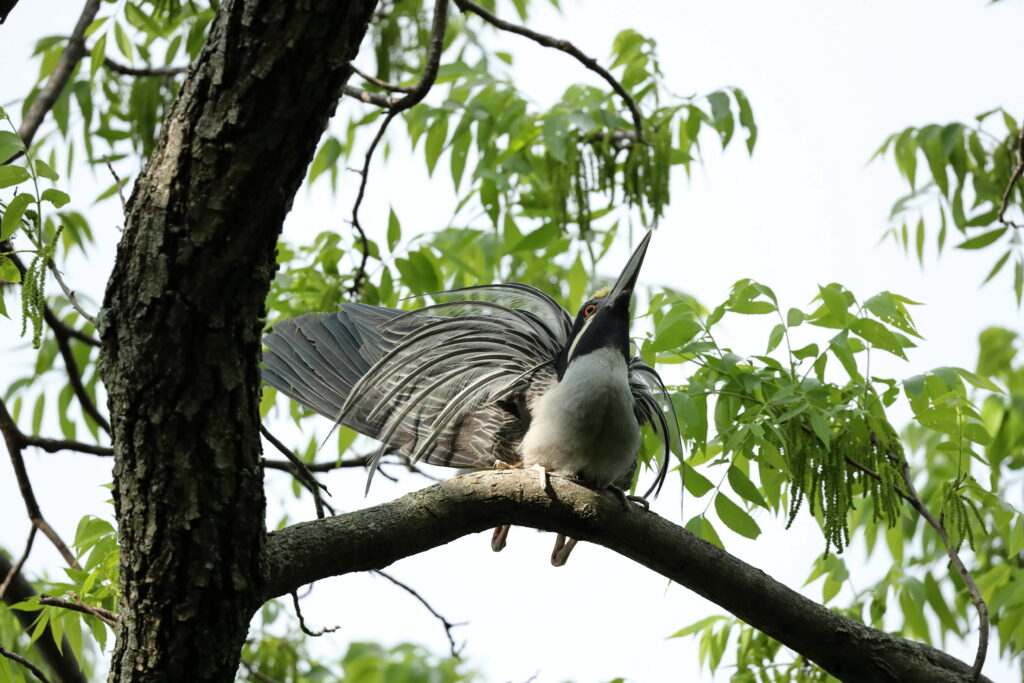
Perhaps my favorite courtship shot of the season.
“With her long hair falling
And her eyes that shine like a midnight sun
Oh she’s the one
She’s the one
That thunder in heart
At night when you’re kneeling in the dark
It says you’re never gonna leave her
But there’s this angel in her eyes
That tells such desperate lies
And all you want to do is believe her”
Bruce Springsteen- She’s The One


